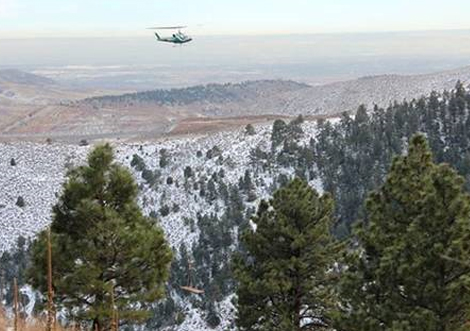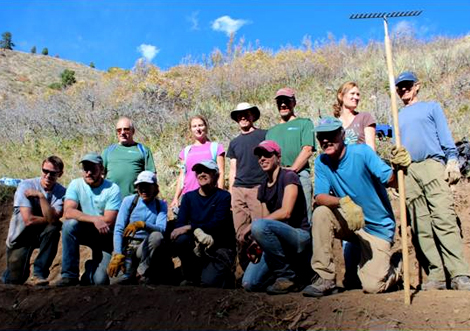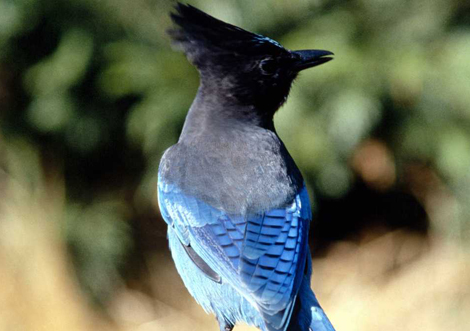The long-desired goal to develop a Jeffco Open Space Communications and Community Involvement Plan was completed in July and approved by the Advisory Committee at their August meeting. Multiple events garnered momentum for this plan, from the public input during the Crown Hill Park project to the process which updated the Jeffco Open Space Master Plan. Also, as a requirement of the Commission for Accreditation of Park and Recreation Agencies (CAPRA), Jeffco Open Space has to have this plan in place.
The Overall Communications Goal is to provide accurate, consistent and timely information to Jeffco Open Space customers – Jefferson County residents, users of parks, trails and facilities, program participants, and service beneficiaries.
Increase awareness of Jeffco Open Space benefits, services, responsibilities and results by increasing Panorama subscriptions, Facebook fans and Twitter followers. Jeffco Open Space will collect email addresses and organize them by park, region and division for various communications.
Produce an annual report from the information contained in the Quarterly Management Reports and post on the Jeffco parks website (http://jeffco.us/parks/).
Improve communication and information management by:
Conducting a statistically valid, quantitative survey prior to updating the Master Plan.
Identify what the audience wants to hear, needs to hear, and already knows, while designing messages that address misconceptions and convey benefits. Seek feature reporting for compelling topics. Use a monthly feature on KUSA-TV’s “Colorado and Company” to address specific issues.
Support rangers in creating materials related to health, safety and natural resource protection issues in our parks, including Share & Care messages.
Employ multimedia communications:
Traditional media – Issue news releases to media — newspapers, radio and television stations. Solicit coverage from individual reporters.
Social media (Facebook, Twitter, Instagram, YouTube) – Create compelling messages, initiate contests and invite participation. Utilize videos to help convey complex information and highlight enjoyable recreation and nature/history experiences.
Brochures and other printed materials – Use graphic standards and warm, friendly and easy-to-understand messages.
Website – Continually improve and update the website. Review analytics quarterly. Keep content fresh and succinct.
Signs/Kiosks/Displays – Follow style guide, graphics and sign standards. Develop attractive and engaging displays to invite public dialogue at community festivals and promote attention at parades. Construct and maintain a photo database for easy retrieval of images by location and subject.
Increase employee motivation and satisfaction by:
Providing opportunities for employee dialogue and recognition
Supporting the acknowledgment of extraordinary work through award nominations and media placements Supporting continuing education, networking and training for Communications Team members.
The Community Involvement Goal is to increase public involvement that allows Jeffco Open Space to receive information from the community on an ongoing or project-specific basis. This will help Jeffco Open Space formulate decisions related to their projects, programs and services.
Define and promote methods for citizens to communicate needs and interests.
Invite public involvement and make processes apparent.
Build stronger relationships through better community relations.
Develop and implement community involvement guidelines and strategies suited to each circumstance.
Employ email lists and newsletters to invite participation.
Use contacts at Homeowners Associations to invite participation.
Continually improve and provide opportunities for feedback and input.
Engage the public through participation in community festivals, parades and events hosted by partner organizations and neighboring municipalities.
Invite participation through communication mechanisms.
Acknowledge public participation through posting of comments in listening logs, or showing polling results for a particular effort on the website and in media releases.
Marketing Goals:
Increase awareness of Open Space and Parks and our role in enriching life.
Help connect outdoor recreation with health.
Collect, provide and maintain email contacts and subscriptions to promote the benefits and opportunities of life-enriching experiences.
Key Messages to be featured in the planned communications include:
Enriching Life – Jeffco Parks and its divisions enrich life. We provide quality experiences for our customers, visitors, participants, staff and volunteers. With unique and accessible parks across the County and knowledgeable, caring staff, we offer an enduring value for businesses, their employees and the community at large.
Share & Care – Knowledge is powerful. By having an understanding of the value of the outdoors and the amenities within Jeffco Parks, our customers will have a greater appreciation for the park resources that we steward. The Share & Care message is reinforced by Leave No Trace ethics, natural resource management expertise, and programs provided by Colorado State University (CSU) Extension, Lookout Mountain Nature Center and Hiwan Homestead Museum. A variety of volunteer opportunities allows the public to engage in sharing and caring for their parks in a deeper way, and extends the work of the organization.
Lifelong learning and award-winning programs may be emphasized under the banner of Share and Care.
Nature-Health Connection – Enhance the ongoing partnership with Jeffco Public Health to call attention to research connecting outdoor recreation with better health. Produce monthly news releases shared with cities and districts for their communication outlets. Promote healthy opportunities for citizens, promoting physical and economic vitality in the process.










